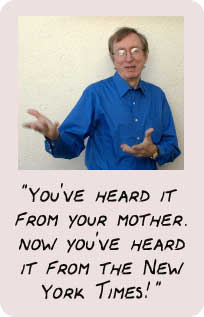|
|
Katalina Groh, Larry Prusak: Some of the world's leading thinkers |
| Storytelling to ignite change: Steve Denning |
 |
The
story must be true
And in my experience, it is
essential that the story be based on a true story.
|
| to happen. But the part of the story that
had happened in August 1998, that had happened. That was true.
When the New York Times wrote an article about my book on this, their headline was: ďStorytelling only works if the tale is true.Ē And I firmly believe this. The truth of the story is a key part of getting the springboard effect. Itís the truth of the story that gives it a sense of urgency. If, by contrast, I say what might happen if we were to implement knowledge management, the reaction tends to be: that will never happen around here! But when the story has actually happened, only two weeks ago, to one of our task teams, then the listeners have to deal with this, to reckon with something that has actually happened. As the New York Times says, the truth of the story is crucial. So youíve heard it from your mother. Now youíve heard from the New York Times. ďDo not tell a lie!Ē Itís not a good idea to go round saying things that arenít true. The New York Times actually has this nice cartoon in their article with the executive sitting on the knee of his mother or grandmother, and it captures nicely the cosy feeling that you get when youíre listening to a story. But what isnít so right about the cartoon is that it shows the old lady reading from a book of fairy stories. These are not fairy stories. These are true stories. And itís the truth of the story that drives the message home. Tell the story as simply as possible The story needs to be told as simply as possible. In other words, I donít use the standard tricks of an entertainment storyteller. I donít tell you whether the health worker in Zambia was a man or a woman. I donít tell you whether it was a doctor or a nurse. I donít give you the color of the hair or the eyes. I donít tell you whether it was hot or cold, quiet or noisy. I donít tell you whether the air was fresh or dusty. All of the tricks that would embed you in the situation in Zambia, I set aside. All of the things that get you to feel what it was like being with that health worker in Zambia, I set aside, because I have a different objective. I donít want you too interested in Zambia. My objective is to create a space for the little voice to create a new narrative based on your context. If I get you too interested in the situation in Zambia, in the context of Zambia, you may never get around to inventing your own story, and spring to the new level of understanding that I am aiming for. So I tell the story in a very minimalist fashion. Itís quite different from telling a story for entertainment purposes. |
| Books and videos on storytelling *** In Good Company : How Social Capital Makes Organizations Work by Don Cohen, Laurence Prusak (February 2001) Harvard Business School Press *** The Social Life of Information, by John Seely Brown, Paul Duguid (February 2000) Harvard Business School Press *** The Springboard : How Storytelling Ignites Action in Knowledge-Era Organizations by Stephen Denning (October 2000) Butterworth-Heinemann *** The Art of Possibility, a video with Ben and Ros Zander : Groh Publications (February 2001) |
| The views expressed on this website are those of Stephen Denning, and not necessarily those of any person or organization |
| Site optimized in 800x600: webmaster CR WEB CONSULTING |
|
|
|
|